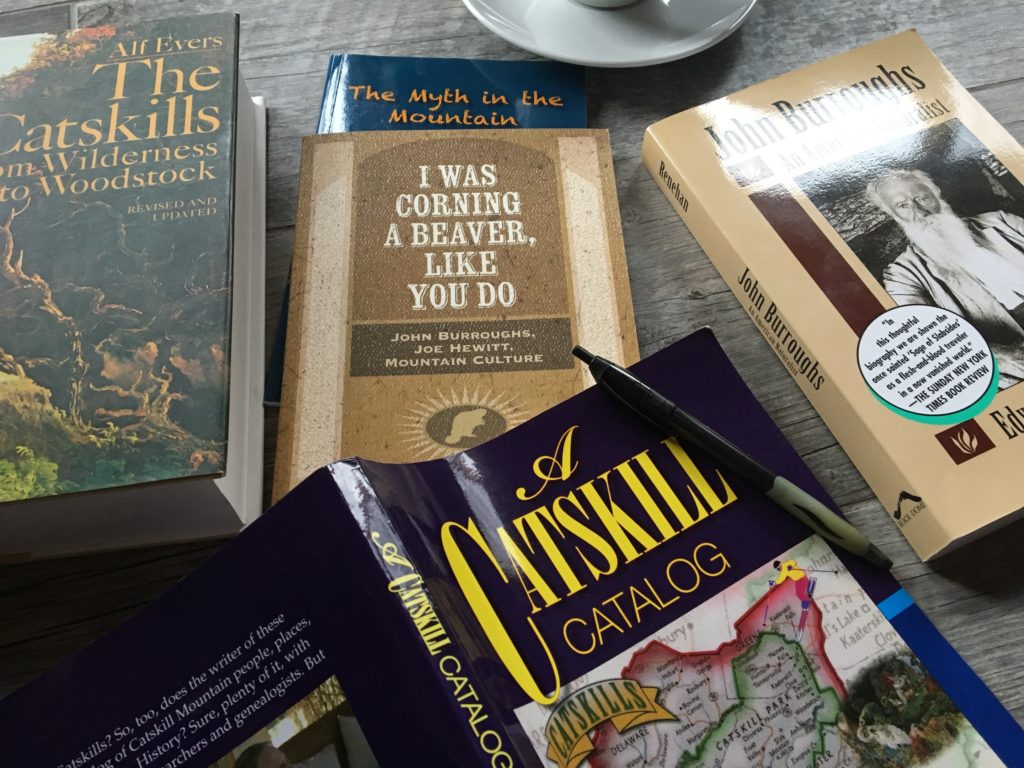“York state’s richest men wagered their principles
while her poorest hacked life from a hillside farm.”
I had lunch with Bill Birns, literally and literally: last week in person and today with a selection of his written works. A Catskill Catalog, borrowed from my local library, is an anthology of literary history, giving details of the stories behind local roads and place names, many of which are named after families and individuals who have lived in the area over the last two or three hundred years, or still do. For example, I didn’t know that the man after whom a nearby road was named, Basil Todd, was a short-form memoirist.
In the chapter on Todd, Birns writes: “Write down your memories today. Tomorrow, they become the stuff of history.” The book is a collection of the columns Bill wrote in the Catskill Mountain News, the local newspaper that was just sold to Joan Lawrence Bauer. He goes on to write: “Local history is democratic history… because its practice is open to all of us: we are each capable of writing down our memories of the people, places, and things that fill our days, or perhaps, talking them into a recording device”. This is true; stories are what make a region. As Leigh Melander said to me: “this is where the manitou lives”, referring to the spirit of the land described by the Algonquian tribe of Native Americans and it allegedly is powerful in these Catskill mountains like their stories and their inhabitants.
The Myth in the Mountain is a short collection of poetry and a transcription of an oral history. The quotation (top) stands out. Hacking life out of the mountains is real work and farming is a high-risk endeavor – more risky than any game played on Wall Street – because the weather is much more fickle and more volatile than any market. An early frost appearing after the trees have blossomed can kill all chances of fruit for that year, which is what happened to our ancient apple tree last year. I’m sure we’re all aware of the damage a drought can do as it’s written in history and honored by literature.
Finally, I’m privileged to be on the board of the John Burroughs’ Woodchuck Lodge in Roxbury, the ancestral home of writer John Burroughs and reading his work to become acquainted with the man and his home.
Just remember, as Bill Birns states it, we can all play our part in being a local historian. We are all part of history.

Thank you, my friend. How nice!
What the hell is a Manitou? Maybe a Manatee that became an amphibian; and, then, through evolution, a four legged mammal that haunted the Catskills. Leigh Melander is a two legged mammal, rarely seen, whose transmogrification haunts the Catskills every day. Myth or real, who knows?